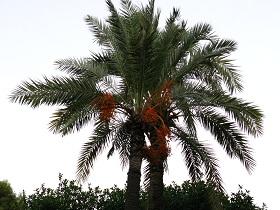Using AI to control energy for indoor agriculture
30 September 2024
Published online 27 October 2010

The date palm, a member of the family Arecaceae, is one of the most widely cultivated trees across the Middle East and North Africa. The monocot tree is grown from offshoots and has been planted for thousands of years for its sweet fruit.
A team of Saudi Arabian and Chinese researchers has now sequenced the complete genome of the date palm chloroplast. Since chloroplasts are inherited maternally, the researchers hope that this will advance propagation techniques and lead to higher crop yields.
The chloroplast genome is organized into two main segments: a large single copy region and a smaller single copy region. These are divided by two copies of inverted repeats. This quadripartite structure is similar to nearly all other angiosperms. It contains 131 genes, but only a little over half encode functional RNA. The remaining genes are non-coding, containing intergenic spacers, introns and pseudogenes.
Unlike other monocots, the chloroplast genome of date palm appears to have endured with relatively few rearrangements, with very limited gene loss-and-gain. This is similar to the chloroplast genome of tobacco. In fact, the chloroplast gene contents of date palm and tobacco were found to be nearly identical, with only one minor difference.
doi:10.1038/nmiddleeast.2010.218
Stay connected: